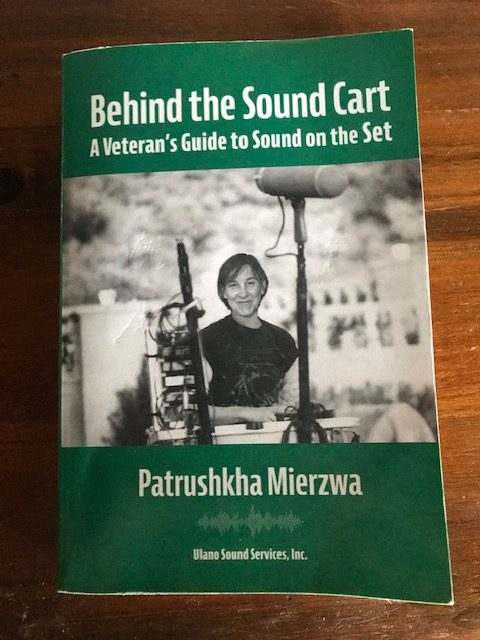
Behind the Sound Cart: A Veteran’s Guide to Sound on the Set is a welcome addition to the small number of books available about production sound recording for screen productions, and it is the only book that I am aware of that focuses on the Sound Utility / Utility Sound Technician (UST) role specifically.
This book is a fantastic resource for those involved with, or interested in working in the Production Sound team for narrative screen productions, but beyond that, it is also useful for Producers in order to help them understand the Sound Utility / Utility Sound Technician (UST) role, which is one that is often not understood fully or appreciated.
While the book discusses some of the technical aspects of the role, with some tips and tricks, a lot of the book is dedicated to providing a better description of what the job entails on a personal level, including interactions with other crew and talent, negotiations with producers, and right through to general career advice. The author has decades of experience and is able to share various anecdotes along the way to reinforce the other content.
The book takes a mentor/mentee approach, which is easy to read and is written in a personable voice. It is wonderful that Mierzwa is keen to share her experience with the world in this way.
At various times in the book, the author uses URLs to link to relevant online content. This is useful for expanding on the material for the book, but this aspect would work better with the eBook version than the print version (which I read), and there is always a risk that 3rd party linked URLs will become dead links in the future.
I recommend this book to anyone keen to gain a deeper understanding of the workings of the Production Sound Team.
Details
Behind the Sound Cart: A Veteran’s Guide to Sound on the Set
Patrushkha Mierzwa
Ulano Sound Services Inc, Los Angeles, USA, 2021
ISBN Paperback: 9781736290002
Errors/Feedback/Notes
P79 – “XLR cable, which stands for External Line Return” – this is not true, or at least not in the sense of the original naming of XLR. I was surprised to read this as it conflicts with what I was always taught and what I had taught. The true story verified from numerous sources (including a good history at http://www.soundfirst.com/xlr.html) is that XLR stands for the the Cannon X series connector, with Latch and Resilient Rubber. I hope this gets corrected in a future version of the book.
P132 – “…getting room tone has mostly become unnecessary” – this section on room tone has some good points, but is over-simplified in my opinion, and there are still lots of situations where getting room tone can still make all the difference to both the dialogue editors work and the final quality of the outcome. Fair enough that it isn’t always necessary, but also something that should be considered carefully depending on the situation. Too big a topic to get into here.
P141 – “Walk Away Wrap” – interesting (perhaps) sidenote from me is that we tend to colloquially call this a Hollywood wrap here in Australia.
P157 – Use of “:” for the “1:85” and “2:40” aspect ratios is incorrect, and should be “1.85” and “2.40” respectively.
P292 – Izotope URL unnecessarily contains all the additional Google search reference path and could/should be trimmed down.
P299 – Not sure why the “?” exists at the end of the Neumann URL

Hi Tim,
I have a new book coming out next weekend, “Beneath the Boom Pole: AThe Art & Science of Boom Operating for Movies & TV.”
I’d like to send you a review copy if I could have your email address, please.
Cheers!
Patrushkha Mierzwa
Hi Patrushka,
Thanks for your comment and that is so great that you have another book coming out! I have just emailed you.
Tim